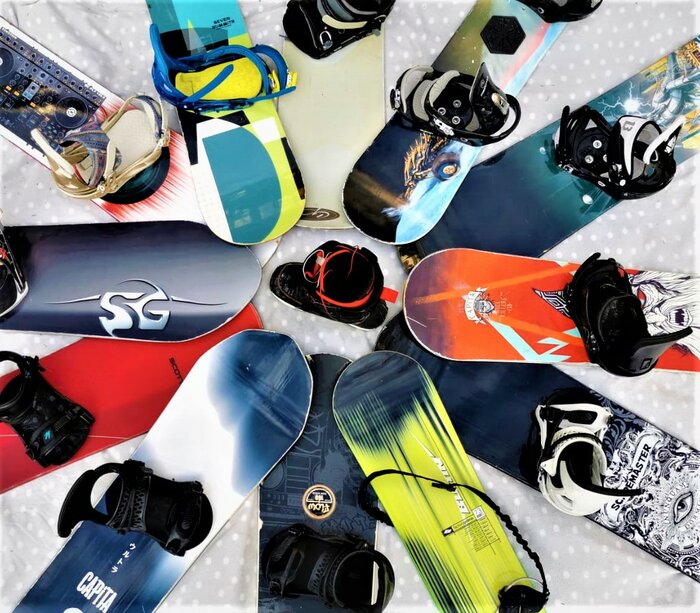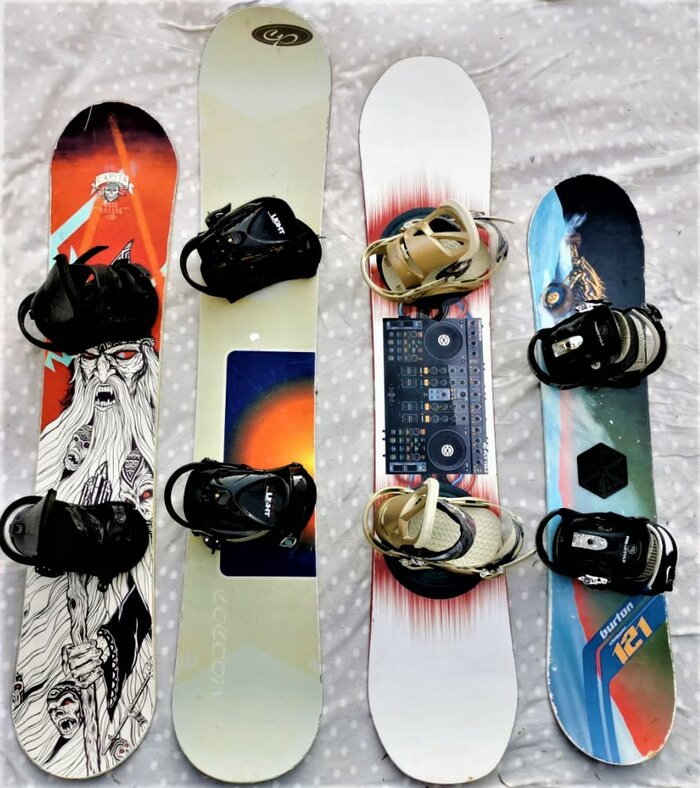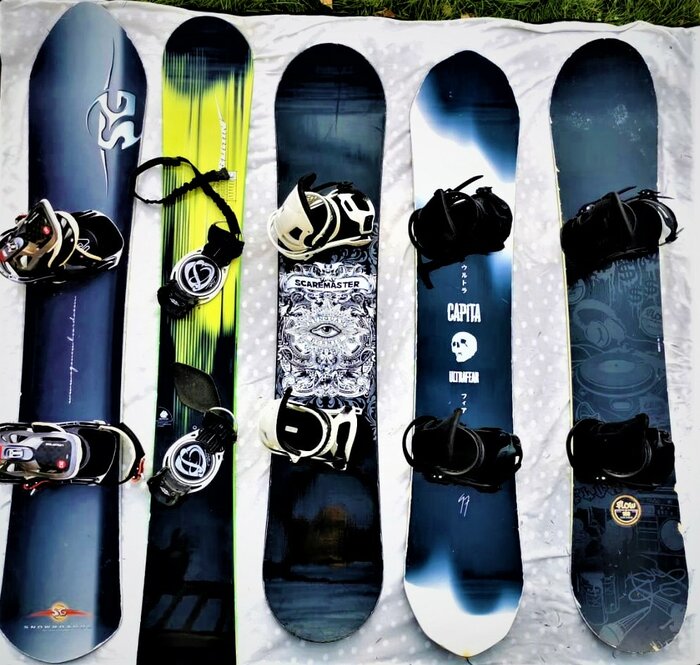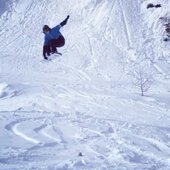
1. Length
The length of a snowboard is determined by the height of the snowboarder. Normally, it should reach approximately to your chin. This is the measurement you start from if you have something special in mind. A beginner will have an easier time with a slightly shorter board. This can also be very useful in the park for tricks and rotations. For off-piste, the board can also be up to your forehead.
2. Width
Big feet will have a hard time on a narrow snowboard. It is important that your board is wide enough for your feet, otherwise you will even trip over them while boarding! That being said, a wider snowboard can provide stability, especially on the big kickers in the park. But be careful! Too wide and you won't feel the board!
3. Shape
Shape refers to the shape of the two tips of the snowboard, nose and tail. There's Twin Tip, where both ends are the same to ride equally well in both directions. Then there is Directional, where only the nose is round and long and the tail is narrow and rectangular, perfect for deep snow. Directionally tapered is very similar to this, only the board tapers towards the tail, making it perfect for carving.
4. The snowboard torsion
Nothing is more confusing than torsion. Simply put, torsion expresses how the board is bent and how the snowboard will behave in certain conditions. The three big categories are camber, rocker and flat. From these you can create colourful mixtures, the hybrids.
Camber is the "classic" positive camber (like a very flat, elongated W) that not only promises smooth performance when carving on the slopes, but also provides pep in the snow park. Rocker, on the other hand, is the complete opposite of camber and bends like a banana. This not only leads to better floatation in powder, turning ease and playfulness. Rocker is also perfect for beginners as it is more forgiving than its counterpart. Flat has no camber. So, it combines rocker and camber: it has better edge grip than rocker, but is more dexterous than camber.
Hybrids can be combined endlessly to make the best board for a specific style. There is Hybrid Camber, Hybrid Rocker, Triple Base Technology and many more. For example, a camber with rocker in front of the nose and tail has the edge grip and pep of a camber and the playfulness of a rocker.


5. Flex
Flex is perhaps the most important category when it comes to snowboards. Flexibility is usually indicated from 1 to 10, with 1 being the softest and 10 the hardest flex.
The stiffer the board, the harder it is to bend – obviously. But what does that mean for snowboarding? Soft snowboards are very popular with beginners because they are forgiving and easy to initiate into a turn.
Medium flex snowboards are, as you might have guessed, a mix of soft and hard flex, so they have a bit of both. While they are forgiving like a soft flex, they also have the speed and aggressiveness of a hard flex.
Hard snowboards, on the other hand, are perfect for carving at ultimate speed. They react quickly and need powerful and controlled steering, otherwise you will easily lose control or get stuck.


